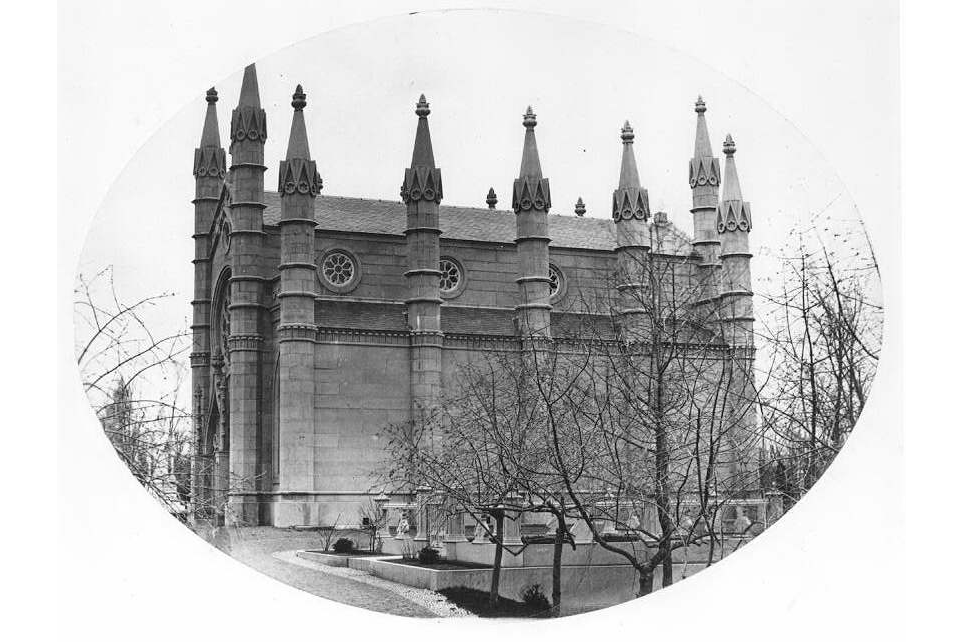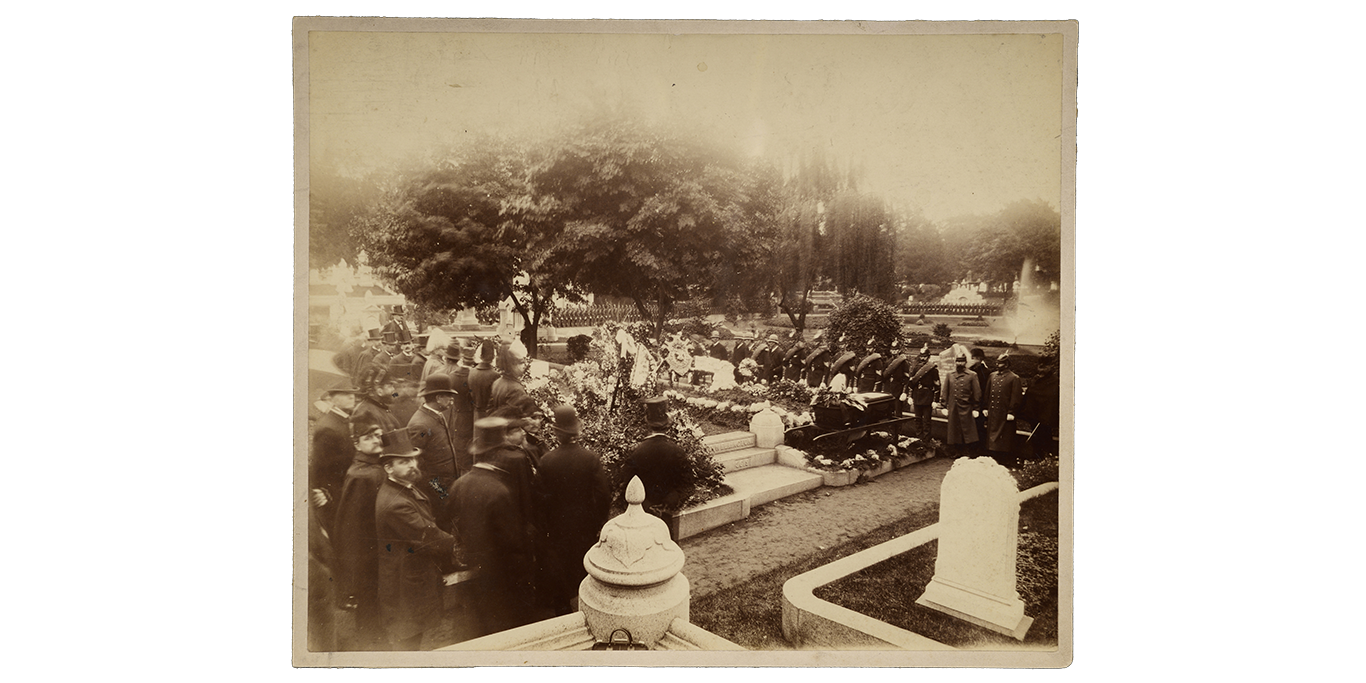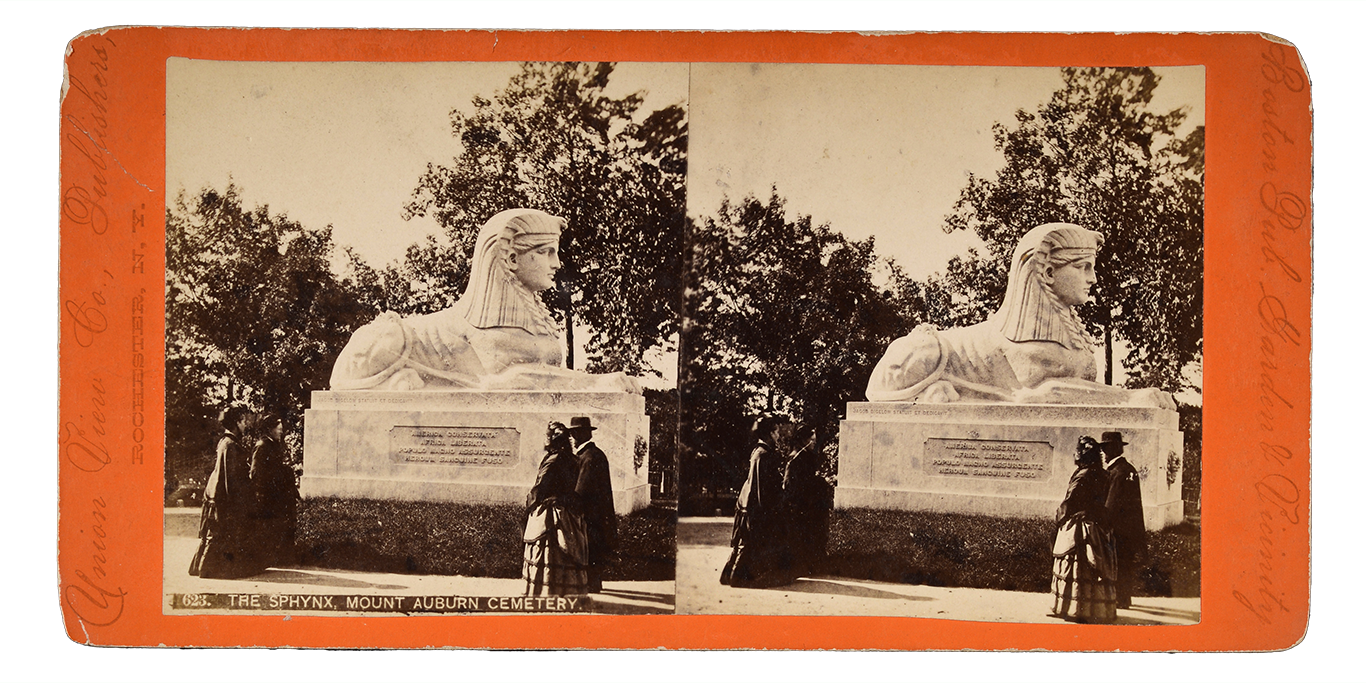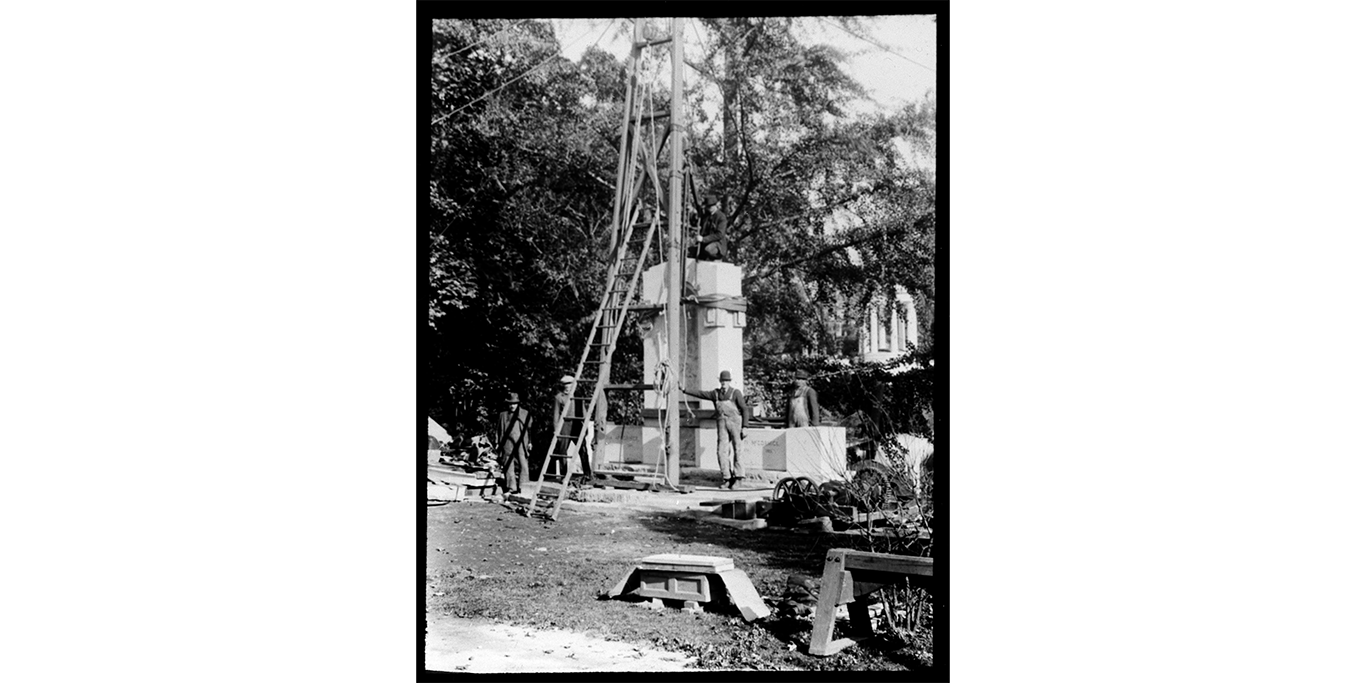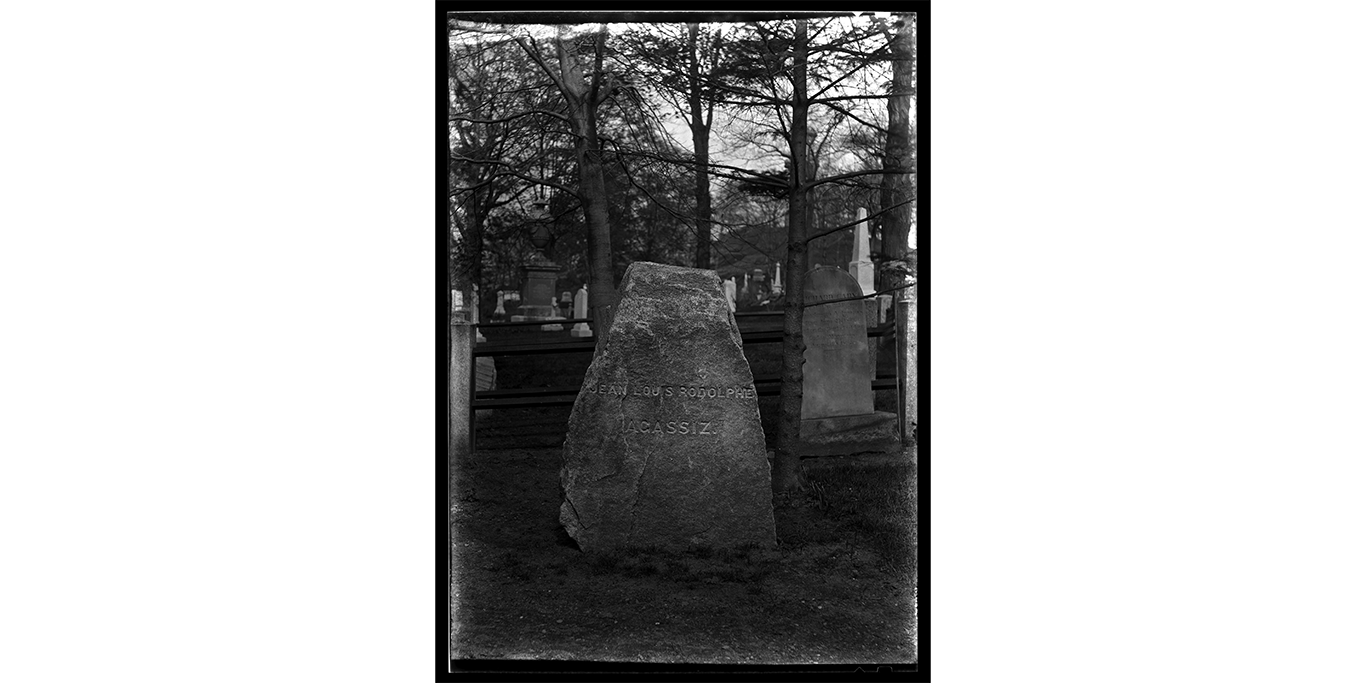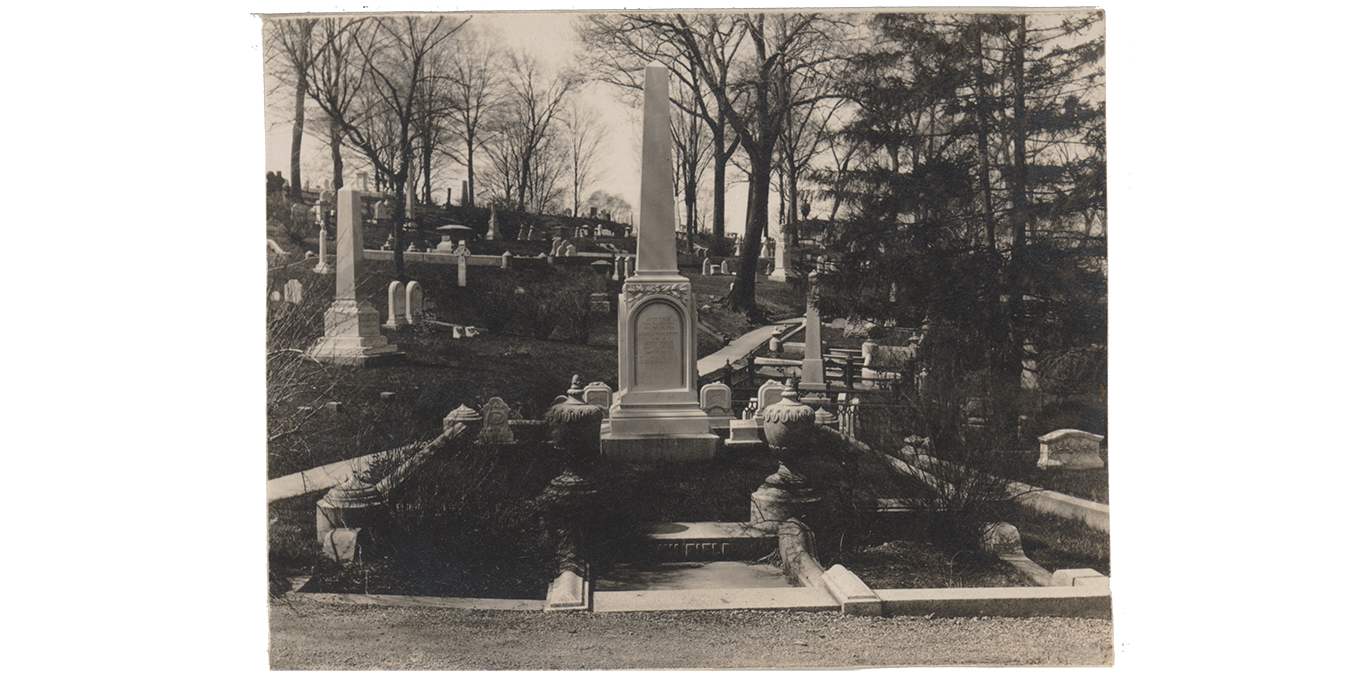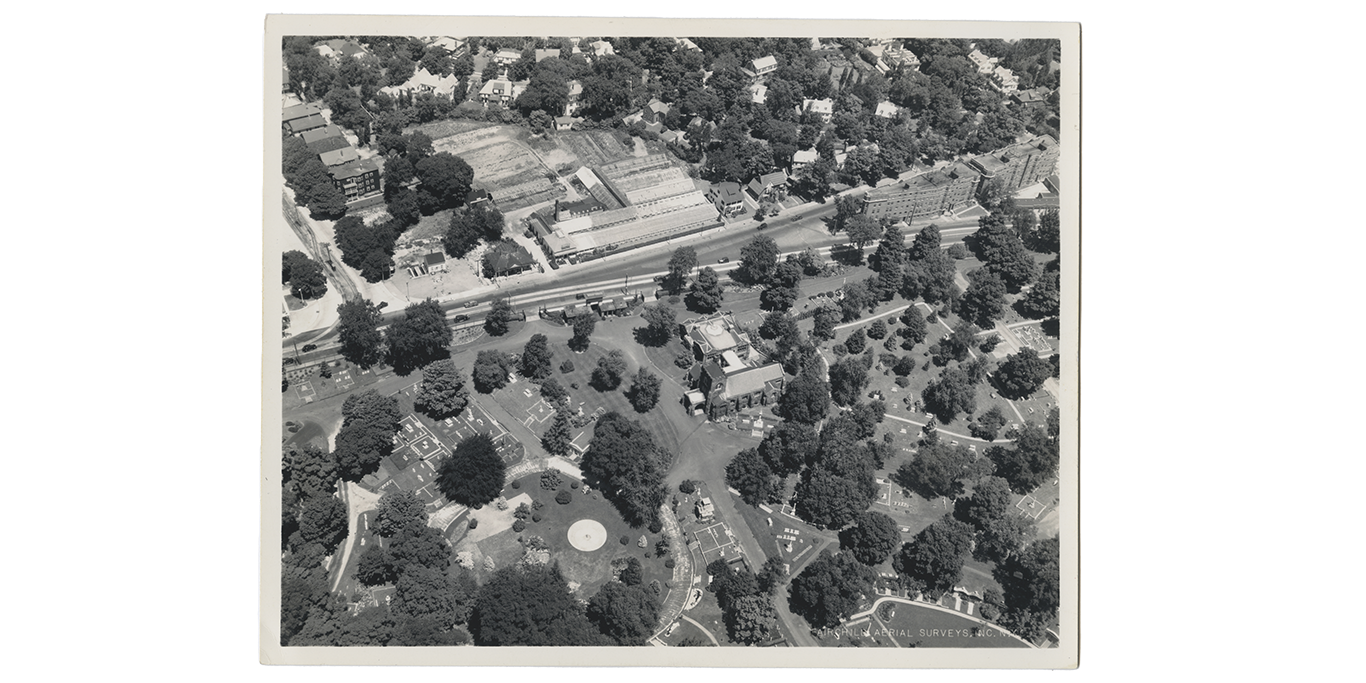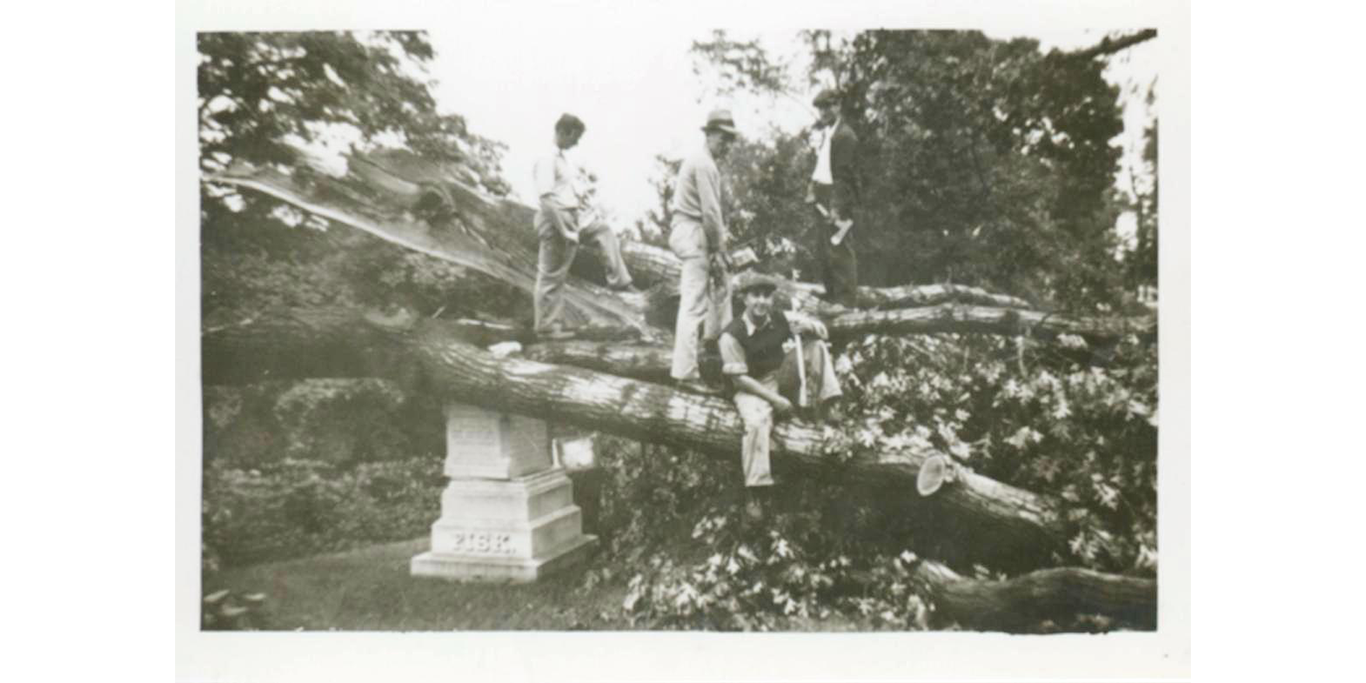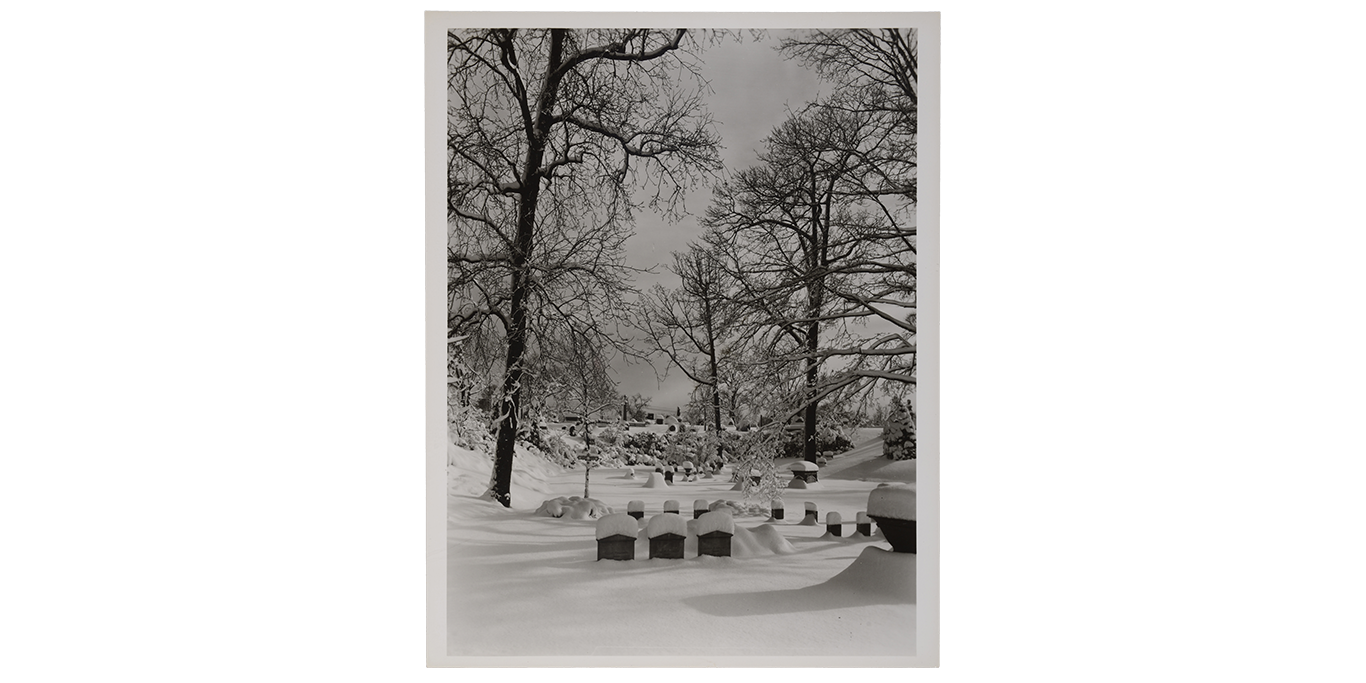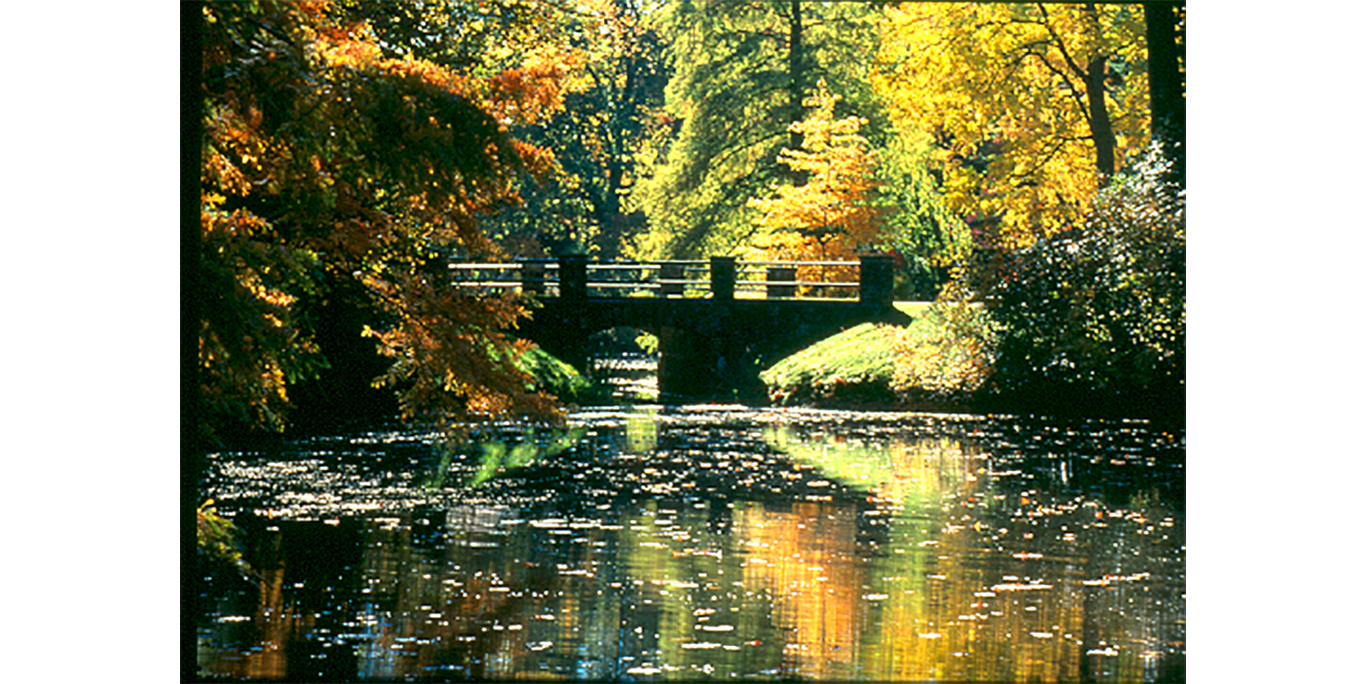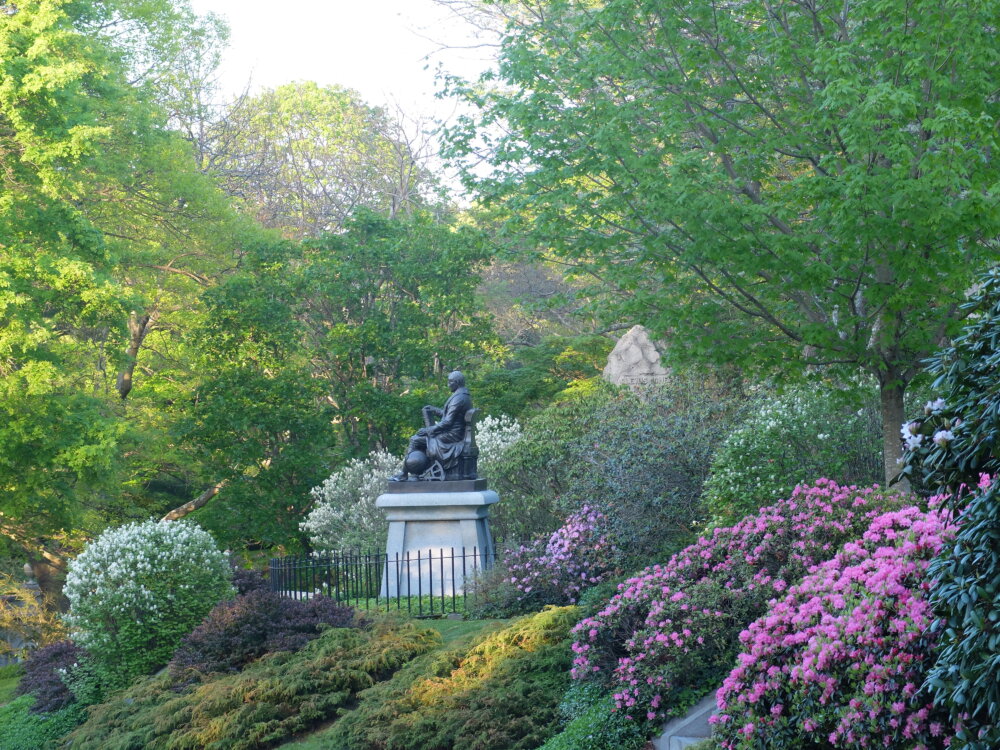Photograph Collections
When photography burst upon the scene in 1839, the medium provided a new way of documenting and remembering Mount Auburn’s sacred landscape. (The earliest visual representations of the Cemetery, founded in 1831, had been rendered in the form of finely drawn engravings.) Today the photograph collections, accumulated for more than a century and a half, offer multiple perspectives of the Cemetery’s rich history.
Housed in the Mount Auburn’s Historical Collections Department, photographs have originated from a variety of sources within the Cemetery (including business records, superintendent reports, and staff albums), and the collection actively grows through additional gifts and purchases. Over time, noted photographers, staff, and associates intimately familiar with the Cemetery have documented Mount Auburn. A broad range of formats and processes in the collection spans the history of the medium—from early salt prints, stereo views, glass-plate negatives, and lantern slides to 35mm slides, color prints, and digital images. Researchers will be fascinated to find evocative images of Story and Bigelow chapels, monuments, and mausolea representing the funerary artwork of celebrated 19th– and 20th-century architects and sculptors; seasonal views of trees, horticulture, and landscape design; and intriguing documentary shots revealing the inner workings of the Cemetery, such as maintenance buildings, cemetery personnel, and Mount Auburn programs and events from the 19th century to the present.

